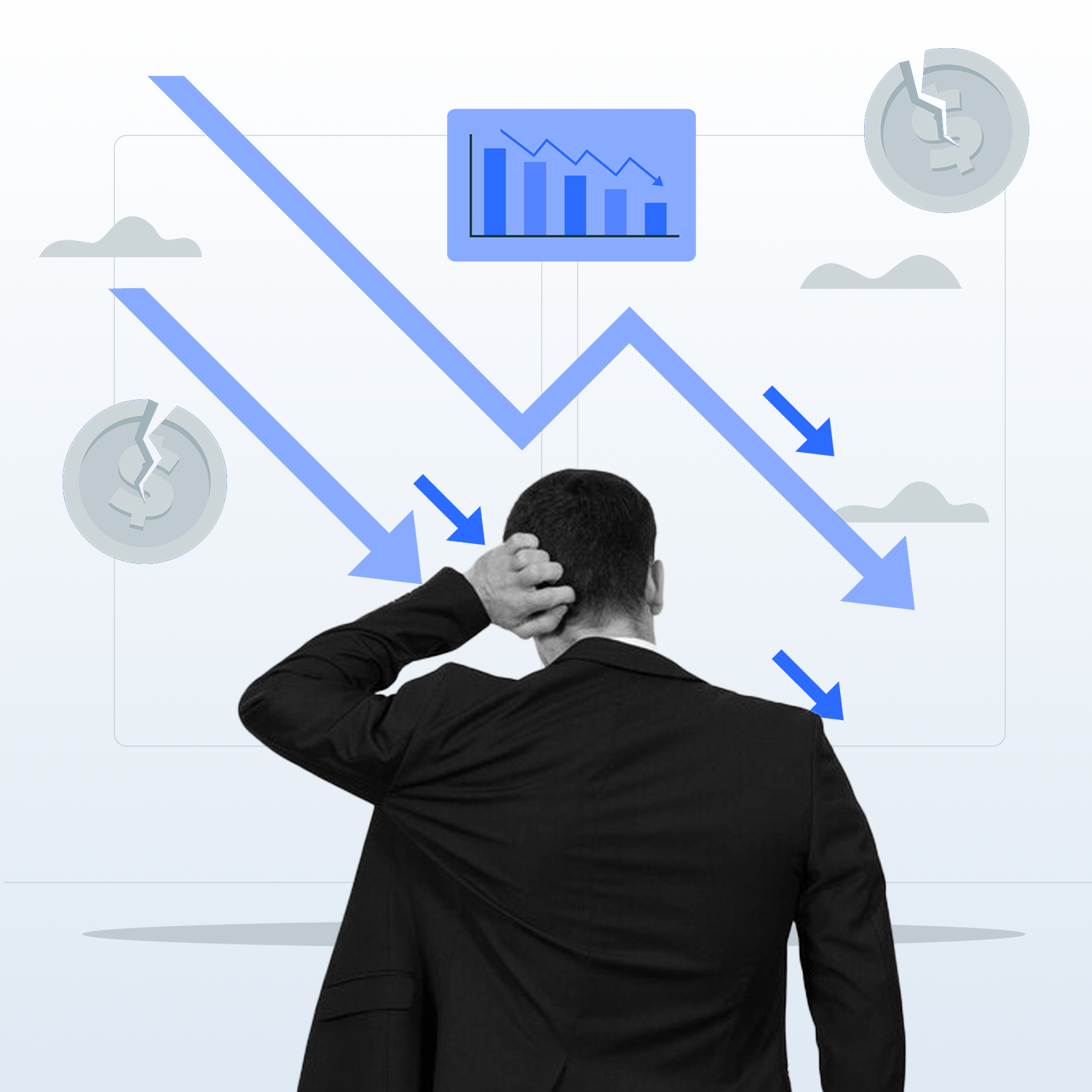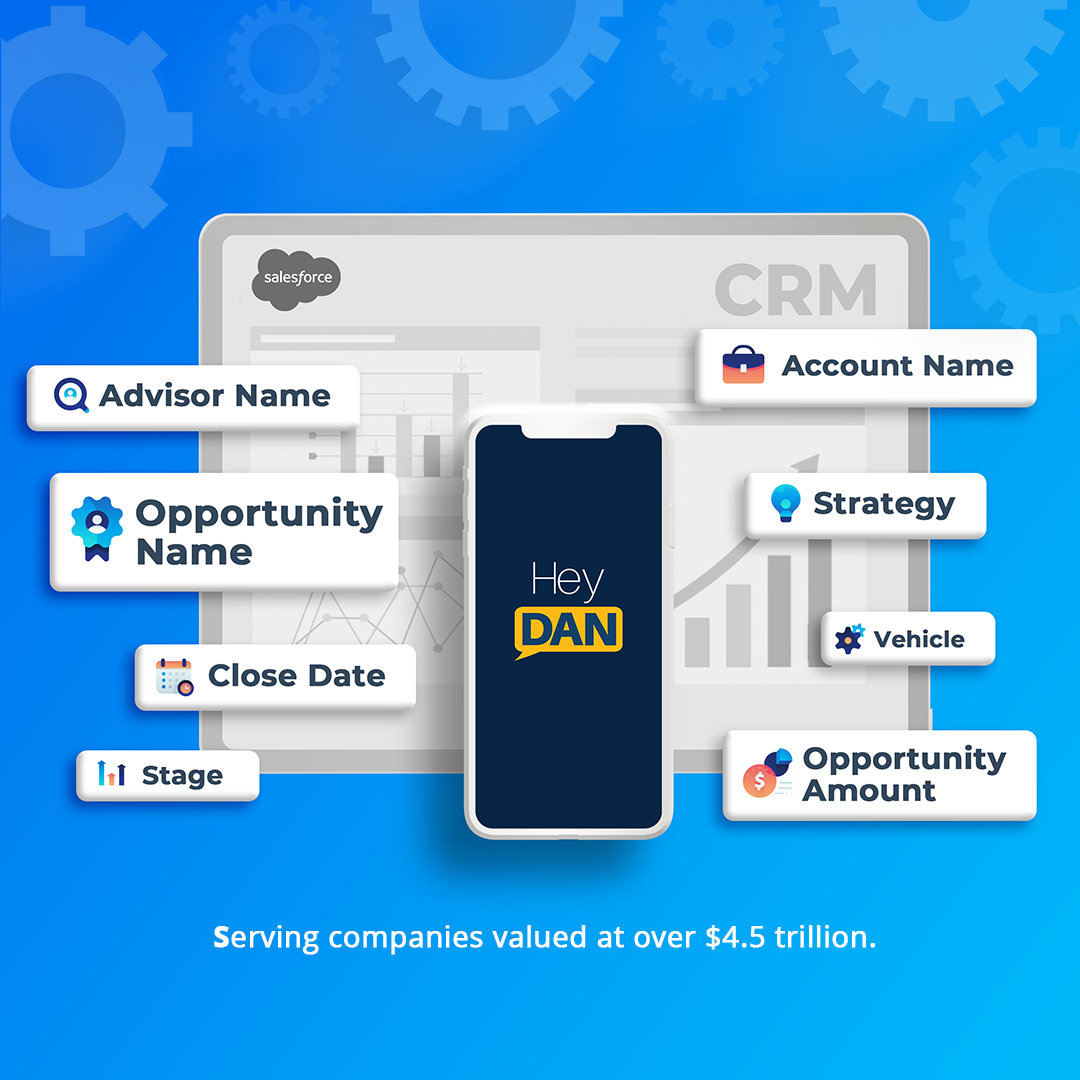Manual data entry is the common enemy of all companies with a CRM. With it, workforce productivity is reduced and adoption rates are lowered. Data entry takes up a big portion of a CRM user’s time and effort, something that should be spent facing customers and doing sales. It is also prone to human error, thus affecting the quality of data.
These issues can be a big problem for the CRM project, especially since CRM relies heavily on quality data for it to produce accurate analytics and reports.
To mitigate the issues that come with manual data entry, 2 solutions have been developed:
Data Entry Software and Data Entry as a Service.
Both solutions aim to reduce, if not eliminate manual data entry for your company by entrusting the job to service provider. Let’s look at these two in-depth to see which one is right for your CRM overall:
Data Entry Software
The idea is to utilize certain technologies to automatically capture, organize, and manage data. Artificial intelligence aided by machine learning is often used in these data entry systems so that the software learns on its own. It can also use Optical Character Recognition(OCR), simply known as text recognition, or Voice-to-Text technology. Lastly, it requires little to no human involvement in the data entry process.
A good case of which would be Siri, Alexa, or the Salesforce denounced Einstein Voice which aimed to really capture CRM data with their automation software.
Advantages
Consistent Quality and Accuracy
If the program is set right the first time, the system will not make mistakes, thus the data entered will be accurate and consistent. There are no unreliable and unpredictable human factors involved. A data entry software is consistent, less likely to be error-prone, and maintains that quality throughout as long as you follow the right format, syntax or formula how to get the data interpreted correctly by the AI.
Fast output results
As with any computer program, garbage in = garbage out. Output results will be based on the input you have it process. It will be fast and will function as how it was designed to. Dictation / Data Entry software has been around for a while now and it will continue to improve it’s results as it gets updated.
Disadvantages
Program-reliant
If there is something wrong with the code itself, or an update causes a bug, it may disrupt the data entry processes. You must follow how the software is set and how it can properly learn to adapt. It might also be limited to certain outputs meaning it might not be able to key in the right information to ANY CRM as not all CRMs are the same. Most common is to just have recorded data as a transcribed file in which it will be up to you to still put in the data into your CRM.
Low Accuracy and still consumes a relevant amount of time
Transcription software will always have accuracy issues as it will depend on the quality of the recording it will transcribe so ultimately time of input to your CRM will be reduced but not that much as you may still need to put in relevant information to the correct fields in your CRM.

Data Entry as a Service
Instead of having your CRM users input and verify the data themselves, data entry as a service allows you to hand over that task to dedicated specialists from a third-party service provider. Selecting the right vendor is the most important part, as they are the ones handling the data entry operations.
Advantages
Higher Data Accuracy
As compared to your in-house CRM users, data entry specialists are expected to deliver a higher level of data quality and accuracy. They are specially trained and data entry is their core responsibility. They don’t have to juggle other tasks.
IT-related processes are taken care of
The data entry outsourcing vendor is the one in charge of the IT-related processes for manual data entry. No need for your CRM users to learn the tech side of data entry or for your company to hire an IT specialist and purchase additional software.
Disadvantages
Can be expensive to get started
On-boarding and training is expected using such services, and contracts engaged with to ensure expectations from the service providers. These tend to be more expensive and more suitable for Enterprise level companies.
Human Factors
Technically, manual data entry is still manual data entry even if it’s outsourced. The data is still being entered by a human who is prone to errors, and the specialists themselves can even leave the company if they want to. Other human factors include boredom, lack of focus, hunger, emotional state, and even work-culture, which may affect their productivity.
Finding the right solution for your business
Human data entry experts are easier to hire and train without the need for complicated IT support, while a data entry software is free from human factors, time constraints, and is totally hands-free. If you think about it, these 2 solutions are capable of covering up the downsides of the other.
- Relying on humans alone can be risky on the data quality and turnaround times. With the help of AI and automation, their work will be streamlined and all they have to do now is check if the data is entered correctly. The smarter the AI the faster it gets data in the correct fields in your CRM.
- Relying solely on automation puts heavy pressure on the tech’s infrastructure. Any bugs and errors, resulting in skewed data, can be easily missed. With human intervention, the data can quickly be reviewed and corrected, making sure that nothing falls through the cracks. This process also helps the AI learn faster, making it more reliable.
- Works with ANY CRM – with humans aided by AI technology, it will not be a matter of what CRM the system will be compatible with. With the proper training and integration from the CRM data experts, any CRM can be used and data will still where it needs to be.
At the end of the day, it’s all about the time saved from minutes to hours ultimately giving back time to your sales people.

 How AI CRM Entry Boosts Sales Forecast AccuracyMarch 25, 2025 - 12:47 pm
How AI CRM Entry Boosts Sales Forecast AccuracyMarch 25, 2025 - 12:47 pm 5 Reasons Top Sales Teams Are Using Hey DAN for CRM AutomationFebruary 14, 2025 - 11:22 am
5 Reasons Top Sales Teams Are Using Hey DAN for CRM AutomationFebruary 14, 2025 - 11:22 am The Cost of Manual CRM Data EntryJanuary 31, 2025 - 9:18 am
The Cost of Manual CRM Data EntryJanuary 31, 2025 - 9:18 am Why CRM Entry Needs a RevolutionJanuary 25, 2025 - 3:10 am
Why CRM Entry Needs a RevolutionJanuary 25, 2025 - 3:10 am Hey DAN’s Compatibility with Microsoft IntuneJanuary 3, 2025 - 11:01 am
Hey DAN’s Compatibility with Microsoft IntuneJanuary 3, 2025 - 11:01 am
How AI CRM Entry Boosts Sales Forecast Accuracy
/in Articles, CRM Automation5 Reasons Top Sales Teams Are Using Hey DAN for CRM Automation
/in Articles, CRM AutomationThe Cost of Manual CRM Data Entry
/in Articles, Voice to CRMWhy CRM Entry Needs a Revolution
/in Articles, CRM Data Entry, Voice to CRMIn the fast-paced world of sales and business development, every second matters. Yet, a considerable amount of time and energy is spent on one repetitive task: CRM data entry. This essential process often becomes a burden, leading to incomplete records, delayed updates, and frustrated sales teams. It is clear—CRM entry needs a revolution, and AI technology is leading the charge.
The Problems with Traditional CRM Data Entry
For many enterprises, CRM systems are the lifeblood of their sales operations. They store crucial customer information, track interactions, and provide insights that guide decision-making. However, traditional methods of CRM entry have notable drawbacks:
The AI-Powered Solution: Transforming CRM Entry
The advent of AI CRM Entry marks a turning point for businesses looking to streamline their processes. By automating data capture and processing, AI tools eliminate the pain points of manual CRM updates. These technologies enhance productivity, improve data accuracy, and ensure CRM systems live up to their potential.
Hey DAN exemplifies the transformative power of AI in CRM entry. Designed with the sales professional in mind, Hey DAN offers:
Why Enterprises Need AI CRM Entry Today
Enterprises that resist adopting AI CRM entry risk falling behind their competition. In today’s data-driven landscape, quick, accurate, and comprehensive CRM updates are no longer optional—they are critical to business success. Here’s why:
Looking Ahead: The Future of CRM Data Management
As businesses continue to adopt AI-powered solutions, CRM systems will become more than data repositories—they will evolve into dynamic hubs that provide actionable insights. Tools like Hey DAN are already paving the way, ensuring that AI CRM Entry is not just a convenience but a necessity for modern enterprises.
The revolution is here. It’s time to rethink how we handle CRM entry—and embrace a smarter, faster, and more accurate approach that drives success across every facet of the business.
Hey DAN’s Compatibility with Microsoft Intune
/in Articles, Sales EnablementEnhancing Productivity and Security
Microsoft Intune is the backbone of enterprise device management, enabling organizations to securely manage applications and devices while maintaining flexibility and compliance. As businesses continue to embrace cloud-first solutions, Intune has become a cornerstone for seamless and secure operations. Hey DAN, a leader in sales enablement through CRM data entry automation, amplifies these capabilities. By integrating seamlessly with Intune, Hey DAN ensures enterprises can leverage its voice-to-CRM automation without compromising on security or efficiency.
Why Companies are Embracing Microsoft Intune
Unified Device Management: Intune allows organizations to centralize the management of devices and applications, creating a cohesive IT ecosystem.
Enhanced Security: Enterprises benefit from advanced security measures like conditional access, encryption, and compliance policies, safeguarding corporate data on both corporate-owned and BYOD devices.
Support for BYOD Policies: Intune bridges the gap between employee-owned and corporate devices, ensuring that productivity apps like CRM tools remain secure and compliant.
Scalability: Ideal for organizations of all sizes, Intune’s flexible architecture supports growth and dynamic business needs.
Integration with Microsoft 365: Close integration with tools like Teams, SharePoint, and Office applications ensures productivity is never compromised.
The Role of Hey DAN in Streamlining Sales Workflows
Sales teams thrive when their tools eliminate tedious tasks and enhance efficiency. Hey DAN’s innovative voice-to-CRM technology empowers sales representatives by automating data entry and transcription of voice notes directly into CRMs.
With Hey DAN, businesses:
– Reduce time spent on administrative tasks, enabling sales reps to focus on client engagement.
– Minimize data inaccuracies with precise transcription.
– Experience faster CRM updates, leading to improved pipeline management and forecasting.
Why Hey DAN’s Compatibility with Microsoft Intune Matters
– Seamless Deployment: Hey DAN can be rapidly deployed across company-managed devices through Intune’s application management tools, ensuring quick and efficient rollouts.
– Improved Security: Intune’s rigorous security protocols, combined with Hey DAN’s robust data handling, ensure sensitive CRM data remains protected.
– Ensured Compliance: With Intune’s policy enforcement, businesses can rest assured that Hey DAN operates within regulatory and organizational frameworks.
– Scalability and Flexibility: Whether supporting global sales teams or regional SMBs, Hey DAN integrates effortlessly into the Intune-managed environment, adapting to varied enterprise needs.
Real-World Use Cases
Case 1: A Global Sales Team: A multinational corporation utilizes Intune to manage devices across continents. Hey DAN ensures secure and efficient CRM updates, enabling sales leaders to make data-driven decisions.
Case 2: SMB Empowerment: Small to mid-sized businesses with BYOD policies leverage Intune and Hey DAN to maintain security while enabling sales teams with cutting-edge productivity tools.
Microsoft Intune has redefined enterprise device management, offering unmatched security and efficiency. Hey DAN, with its revolutionary voice-to-CRM technology, complements Intune’s capabilities by eliminating data entry challenges for sales teams. Together, they empower organizations to enhance productivity, ensure compliance, and drive business success. Enterprises already using Intune can unlock even greater value by integrating Hey DAN into their operations, streamlining workflows and reinforcing security across their sales ecosystem.
——————————————————————————————————————–
First Released into app stores, Oct 19, 2023
Microsoft Intune – List of Supported Apps
https://learn.microsoft.com/en-us/mem/intune/apps/apps-supported-intune-apps
Hey DAN for Intune – iOS
https://apps.apple.com/us/app/hey-dan-for-intune/id6448539741
Hey DAN for Intune – Android
https://play.google.com/store/apps/details?id=com.civi.heydanforintune&hl=ln&pli=1
Overcoming Sales Challenges
/in Articles, Sales EnablementBoosting Sales Productivity with Salesforce: Tools, Automation, and Best Practices
/in Articles, Sales EnablementHow Covid-19 Affected the CRM Landscape
/in Articles, CRMIn conclusion, the COVID-19 pandemic had a significant impact on the CRM landscape, and businesses that have been able to adapt to the changing demands of the market have been able to stay competitive. CRM systems had to evolve to support remote work, digital transformation, changing customer behavior, customer retention, and data security. As the world continues to recover from the pandemic, businesses will need to continue to innovate and adapt to the changing landscape to remain successful.
Data Entry Outsourcing Explained
/in Articles, CRM Data EntryOutsourcing administrative tasks, such as data entry for CRM, is a common strategy to boost company performance. It reallocates the time that CRM users would otherwise have spent on manual data entry, and is a great way for employees to focus on core business tasks such as prospecting, selling, and attending to customer concerns.
If you are planning to outsource your data entry tasks, or you already are, or you’re simply planning to learn more about it, keep reading.
What is Data Entry Outsourcing?
Data Entry Outsourcing is the system of hiring skilled data entry professionals, or some other entity, to handle your company’s data. The people hired are commonly under an outsourcing provider or vendor which facilitates and acts as a middle man between the client and the data entry professionals. Going through a vendor is often cheaper, and more convenient than hiring people yourself.
Additionally, it’s good to note that most data entry professionals hired by vendors are people from English proficient countries outside of the United States, like India, Ukraine, and the Philippines. They are often highly trained and some of them are even required to have high typing speeds upon starting the job.
Why do companies choose to outsource data entry jobs?
Many companies outsource for various reasons. A survey by Deolitte shows us that companies are motivated to outsource due to these factors:
Will your company benefit from data entry outsourcing?
Know and Assess your Business needs
Before anything, thoroughly assess the needs of your company. Know which areas of operation your company is weak at, gather statistical data, and decide whether it should be outsourced. Determine it should be outsourced either partially, or fully. Lastly, based on the company’s current standing, weigh in whether outsourcing will bring more benefits than risks, and if it is indeed the best solution.
Identify the specific services and requirements you will need from the Outsourcing Company
Narrow down the specific services that your company needs from an outsourcing company. This is where you expound on the idea of hiring a data entry service provider. Determine your requirements in terms of:
Calculate the Return of Investment
Have an idea of how much your company can save, or earn, through outsourcing. Remember that you are outsourcing to cut on expenses, and increase efficiency, so calculating the potential ROI is essential. After assessing your company’s needs, you should already have an idea or an estimate of the costs. Also, calculate and compare how much it would cost to have your own team do the data entry tasks versus how much it would be to outsource them.
Conclusion
Data entry outsourcing can be a reliable course of action take if you believe your company will benefit from the extra time you buy back your employees to become from productive yielding in more sales and profit altogether.
CRM Data Entry Software vs as a Service – which is better
/in Articles, CRM Data EntryManual data entry is the common enemy of all companies with a CRM. With it, workforce productivity is reduced and adoption rates are lowered. Data entry takes up a big portion of a CRM user’s time and effort, something that should be spent facing customers and doing sales. It is also prone to human error, thus affecting the quality of data.
These issues can be a big problem for the CRM project, especially since CRM relies heavily on quality data for it to produce accurate analytics and reports.
To mitigate the issues that come with manual data entry, 2 solutions have been developed:
Data Entry Software and Data Entry as a Service.
Both solutions aim to reduce, if not eliminate manual data entry for your company by entrusting the job to service provider. Let’s look at these two in-depth to see which one is right for your CRM overall:
Data Entry Software
The idea is to utilize certain technologies to automatically capture, organize, and manage data. Artificial intelligence aided by machine learning is often used in these data entry systems so that the software learns on its own. It can also use Optical Character Recognition(OCR), simply known as text recognition, or Voice-to-Text technology. Lastly, it requires little to no human involvement in the data entry process.
A good case of which would be Siri, Alexa, or the Salesforce denounced Einstein Voice which aimed to really capture CRM data with their automation software.
Advantages
Consistent Quality and Accuracy
If the program is set right the first time, the system will not make mistakes, thus the data entered will be accurate and consistent. There are no unreliable and unpredictable human factors involved. A data entry software is consistent, less likely to be error-prone, and maintains that quality throughout as long as you follow the right format, syntax or formula how to get the data interpreted correctly by the AI.
Fast output results
As with any computer program, garbage in = garbage out. Output results will be based on the input you have it process. It will be fast and will function as how it was designed to. Dictation / Data Entry software has been around for a while now and it will continue to improve it’s results as it gets updated.
Disadvantages
Program-reliant
If there is something wrong with the code itself, or an update causes a bug, it may disrupt the data entry processes. You must follow how the software is set and how it can properly learn to adapt. It might also be limited to certain outputs meaning it might not be able to key in the right information to ANY CRM as not all CRMs are the same. Most common is to just have recorded data as a transcribed file in which it will be up to you to still put in the data into your CRM.
Low Accuracy and still consumes a relevant amount of time
Transcription software will always have accuracy issues as it will depend on the quality of the recording it will transcribe so ultimately time of input to your CRM will be reduced but not that much as you may still need to put in relevant information to the correct fields in your CRM.
Data Entry as a Service
Instead of having your CRM users input and verify the data themselves, data entry as a service allows you to hand over that task to dedicated specialists from a third-party service provider. Selecting the right vendor is the most important part, as they are the ones handling the data entry operations.
Advantages
Higher Data Accuracy
As compared to your in-house CRM users, data entry specialists are expected to deliver a higher level of data quality and accuracy. They are specially trained and data entry is their core responsibility. They don’t have to juggle other tasks.
IT-related processes are taken care of
The data entry outsourcing vendor is the one in charge of the IT-related processes for manual data entry. No need for your CRM users to learn the tech side of data entry or for your company to hire an IT specialist and purchase additional software.
Disadvantages
Can be expensive to get started
On-boarding and training is expected using such services, and contracts engaged with to ensure expectations from the service providers. These tend to be more expensive and more suitable for Enterprise level companies.
Human Factors
Technically, manual data entry is still manual data entry even if it’s outsourced. The data is still being entered by a human who is prone to errors, and the specialists themselves can even leave the company if they want to. Other human factors include boredom, lack of focus, hunger, emotional state, and even work-culture, which may affect their productivity.
Finding the right solution for your business
Human data entry experts are easier to hire and train without the need for complicated IT support, while a data entry software is free from human factors, time constraints, and is totally hands-free. If you think about it, these 2 solutions are capable of covering up the downsides of the other.
At the end of the day, it’s all about the time saved from minutes to hours ultimately giving back time to your sales people.